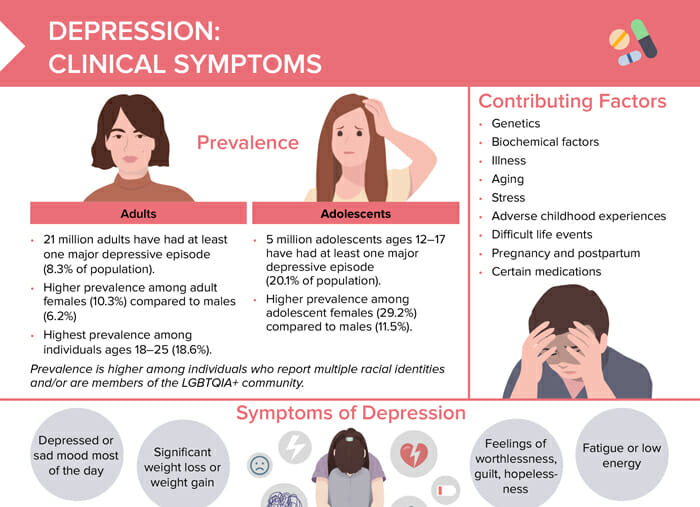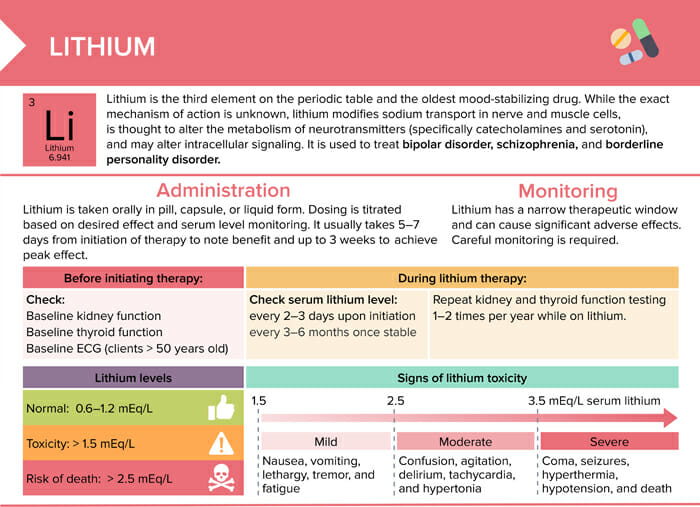What is lithium?
Lithium is the third element on the periodic table and the oldest mood-stabilizing drug. It is used to treat bipolar disorder, schizophrenia, and borderline personality disorder.
Lithium methods of administration
Lithium is taken orally in pill, capsule, or liquid form. Dosing is titrated based on desired effect and serum level monitoring. It usually takes 5–7 days from initiation of therapy to note benefit and up to 3 weeks to achieve peak effect.
How does lithium help with depression?
While the exact mechanism of action is unknown, lithium modifies sodium transport in nerve and muscle cells, is thought to alter the metabolism of neurotransmitters (specifically catecholamines and serotonin), and may alter intracellular signaling.
Lithium: nursing considerations and interventions
Lithium has a narrow therapeutic window and can cause significant adverse effects. Careful monitoring is required.
Before initiating lithium therapy
- Check baseline kidney function
- Check baseline thyroid function
- Baseline ECG (clients > 50 years old)
During lithium therapy
- Check serum lithium level every 2–3 days upon initiation and every 3–6 months once stable
- Repeat kidney and thyroid function testing 1–2 times per year
Common early side effects of lithium
- Gl distress (nausea, bloating, diarrhea)
- Fatigue
- Muscle weakness
- Headache
- Confusion
- Memory impairment
- Polyuria and thirst
Client education points about lithium
- Help clients know what to expect in terms of side effects. Early symptoms often resolve with time. Report if severe/persistent.
- Teach clients to maintain normal dietary sodium intake.*
- Teach clients to increase their fluid intake. Lithium blocks the effects of ADH, causing increased urine output (can lead to hypovolemia).
- Diarrhea can lead to sodium loss, putting clients at risk of lithium toxicity. Clients should be alert to signs of toxicity and notify their provider of diarrheal illness.
- Educate clients to consult their provider before taking drugs that affect lithium levels, including:
- Diuretics
- NSAIDs
- Antihistamines
- ACE inhibitors
- Metronidazole
*Lithium is a positively-charged ion and is processed like sodium by the kidneys. Low serum Na+ causes the kidneys to retain Li+ along with sodium. Li+ retention can lead to toxicity.
Lithium toxicity
Lithium levels
- Normal: 0.6–1.2 mEq/L
- Toxicity: > 1.5 mEq/L
- Risk of death: > 2.5 mEq/L
Lithium toxicity symptoms
- Mild toxicity: nausea, vomiting, lethargy, tremor, fatigue
- Moderate toxicity: confusion, agitation, delirium, tachycardia, hypertonia
- Severe toxicity: coma, seizures, hyperthermia, hypotension, death
Alternatives to lithium for depression

ECT and Psychotherapy for Depression
Review of non-medication treatment options for depression

